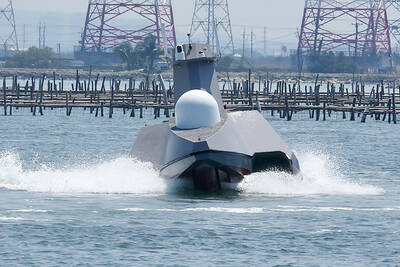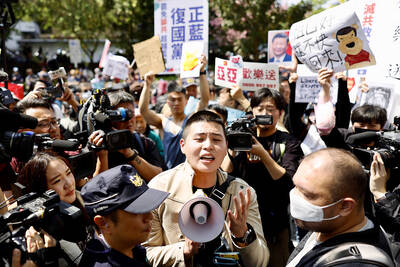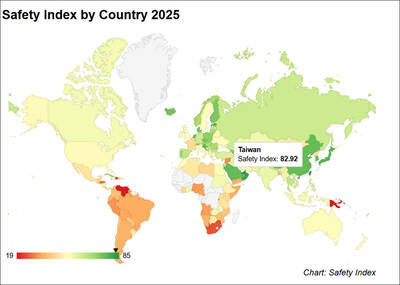For years, the Chinese motorcycle boom was good for companies like Chongqing Dongli Manufacturing Ltd, but by the late 1990s, the Chinese clamor for motorbikes was giving way to automobiles.
So the company, which has four factories in southern China, made the decision in 2001 to go south of the border into Vietnam.
The move has paid dividends. Since investing US$10.3 million to build its first factory outside China, the Chongqing Dongli factory near Hanoi has become one of Vietnam's leading suppliers of motorbike assembly kits.
"Doing business here is pretty much the same as in China, except for the language difference," says Yang Dewei, the 42-year-old manager of the factory known as United Motor Vietnam Co.
Yang's company was one of the early Chinese companies to invest in Vietnam, but hundreds more have followed.
Chinese investment in its southern neighbor has soared from US$66 million in 2005 to US$312 million last year.
Chinese companies invested in 57 projects in Vietnam last year, up from 40 the previous year.
"Chinese investment is increasing fast," said Jonathon Pincus, lead economist for the UN Development Program in Vietnam.
At least 250 Chinese investment projects have been established in the last five years, the Vietnamese Ministry of Planning and Investment said.
China is still a relatively small investor in Vietnam -- ranking 13th behind top investors South Korea, Singapore, Taiwan and Japan.
What's interesting, Pincus said, is where the Chinese money is going.
China is still known as the "factory of the world," but Chinese companies are now building factories in places like northern Vietnam -- where wages are up to 30 percent cheaper than in China's Pearl River Delta -- to tap into the growing Vietnamese market.
In essence, China is outsourcing its own manufacturing success to its southern neighbor. There are also Chinese-owned plants in Vietnam, mostly garment factories, that export to Western countries.
For Chinese businespeople, Vietnam's economic climate has the advantage of familiarity -- a fellow communist country implementing economic reforms and an emerging middle class eager to consume basic and luxury goods.
While China's newly monied middle class is now moving into cars, in Vietnam the motorbike is still king, and that's good news for kit-makers such as Chongqing Dongli.
In 1992, Vietnam had only 500,000 registered motorbikes. Fifteen years later, thanks to increased prosperity from economic reforms, that number is 20 million and growing by more than 1 million per year.
"The economy is growing much like China's was 10 years ago," Yang said.
In 2005, the last year for which detailed figures were available, about 35 percent of Chinese investment in Vietnam was in manufacturing, although during the previous year that sector represented 83 percent of Chinese investments.
The balance of investment -- and the other pillar of China's move into Vietnam -- reflects its priorities elsewhere in the world: natural resources.
Investment in projects such as coal extraction and bauxite mining made up 44 percent of Chinese investment in 2005, up from just 3 percent the previous year.
Still, for Chinese manufacturers, Vietnam's low wages, geographical proximity and cultural similarity make the country an attractive place to export factories, according to Yang.
"Its not exactly the same -- for instance, in my province [Sichuan], the people eat spicy food and I have a hard time finding good food here," Yang said.
"But I am here for the business, and so far it's worth it," he said.

ENDEAVOR MANTA: The ship is programmed to automatically return to its designated home port and would self-destruct if seized by another party The Endeavor Manta, Taiwan’s first military-specification uncrewed surface vehicle (USV) tailor-made to operate in the Taiwan Strait in a bid to bolster the nation’s asymmetric combat capabilities made its first appearance at Kaohsiung’s Singda Harbor yesterday. Taking inspiration from Ukraine’s navy, which is using USVs to force Russia’s Black Sea fleet to take shelter within its own ports, CSBC Taiwan (台灣國際造船) established a research and development unit on USVs last year, CSBC chairman Huang Cheng-hung (黃正弘) said. With the exception of the satellite guidance system and the outboard motors — which were purchased from foreign companies that were not affiliated with Chinese-funded

PERMIT REVOKED: The influencer at a news conference said the National Immigration Agency was infringing on human rights and persecuting Chinese spouses Chinese influencer “Yaya in Taiwan” (亞亞在台灣) yesterday evening voluntarily left Taiwan, despite saying yesterday morning that she had “no intention” of leaving after her residence permit was revoked over her comments on Taiwan being “unified” with China by military force. The Ministry of the Interior yesterday had said that it could forcibly deport the influencer at midnight, but was considering taking a more flexible approach and beginning procedures this morning. The influencer, whose given name is Liu Zhenya (劉振亞), departed on a 8:45pm flight from Taipei International Airport (Songshan airport) to Fuzhou, China. Liu held a news conference at the airport at 7pm,

Taiwan was ranked the fourth-safest country in the world with a score of 82.9, trailing only Andorra, the United Arab Emirates and Qatar in Numbeo’s Safety Index by Country report. Taiwan’s score improved by 0.1 points compared with last year’s mid-year report, which had Taiwan fourth with a score of 82.8. However, both scores were lower than in last year’s first review, when Taiwan scored 83.3, and are a long way from when Taiwan was named the second-safest country in the world in 2021, scoring 84.8. Taiwan ranked higher than Singapore in ninth with a score of 77.4 and Japan in 10th with

GRIDLOCK: The National Fire Agency’s Special Search and Rescue team is on standby to travel to the countries to help out with the rescue effort A powerful earthquake rocked Myanmar and neighboring Thailand yesterday, killing at least three people in Bangkok and burying dozens when a high-rise building under construction collapsed. Footage shared on social media from Myanmar’s second-largest city showed widespread destruction, raising fears that many were trapped under the rubble or killed. The magnitude 7.7 earthquake, with an epicenter near Mandalay in Myanmar, struck at midday and was followed by a strong magnitude 6.4 aftershock. The extent of death, injury and destruction — especially in Myanmar, which is embroiled in a civil war and where information is tightly controlled at the best of times —